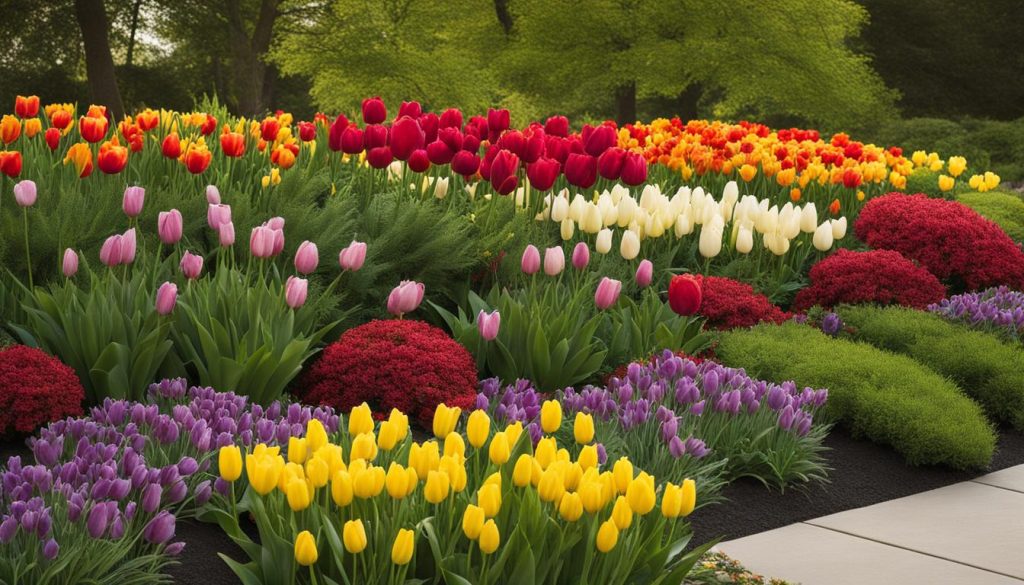Welcome to our comprehensive guide to year-round landscaping in Canada. At our landscaping firm, we believe that your outdoor space should be both beautiful and functional, providing a warm and welcoming atmosphere no matter the season. This means choosing the right plants and design elements to create a landscape that is visually appealing all year long. In this article, we will share our expertise and design ideas to help you achieve a vibrant and welcoming outdoor space that can be enjoyed in all seasons.
Whether you want to add curb appeal to your home, create an inviting outdoor living space, or simply enjoy a beautiful garden, we’re here to help. So, let’s get started on exploring the best plants and design ideas for year-round landscaping in Canada!
Benefits of Year-Round Landscaping
At our landscaping company, we believe that year-round landscaping is a smart investment for your outdoor space in Canada. Not only does it add to the aesthetic appeal of your property, but it also has numerous benefits for you and the environment.
Better Air Quality
Plants play a vital role in cleaning the air we breathe. Year-round landscaping ensures that there are always plants present to absorb harmful pollutants and produce oxygen, improving the overall air quality on your property.
Increased Property Value
Investing in year-round landscaping can increase the value of your property significantly. A well-designed and maintained outdoor space not only adds curb appeal but also makes it more attractive to potential buyers if you decide to sell your property.
Environmental Benefits
Year-round landscaping has several environmental benefits. It helps to reduce soil erosion, minimizes water runoff, and enhances the soil’s fertility. Additionally, plants absorb carbon dioxide, reducing the carbon footprint on your property.
Improved Mental Health
Spending time in nature has been proven to reduce stress levels and improve mental health. Year-round landscaping provides an opportunity for you to enjoy your outdoor space in all seasons, promoting a healthy and balanced lifestyle.
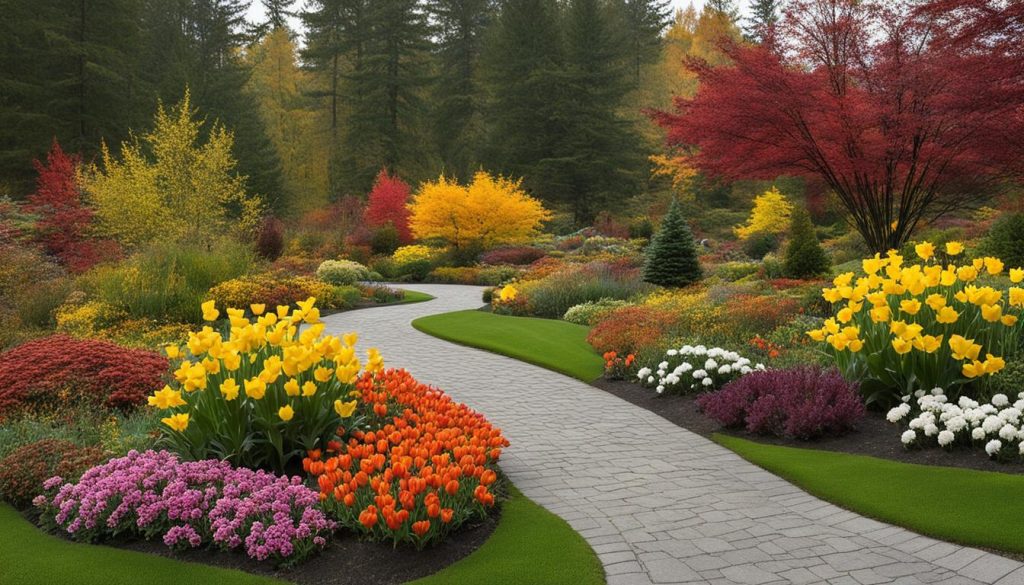
Overall, year-round landscaping provides numerous benefits for your property, the environment, and your health and wellbeing. Contact us to learn how we can help you create a beautiful and functional outdoor space that you can enjoy throughout the year.
Choosing Plants for Year-Round Beauty
If you want to create a beautiful and vibrant year-round landscape, choosing the right plants is essential. You need to select plants that will bloom and thrive during different seasons, ensuring your outdoor space remains visually appealing and inviting throughout the year.
One option is to choose plants that bloom during different seasons. For example, you can pick crocuses and daffodils for spring, Black-eyed Susans and Shasta daisies for summer, chrysanthemums for fall, and holly for winter. This way, you will always have something colorful and cheerful to look at in your garden.
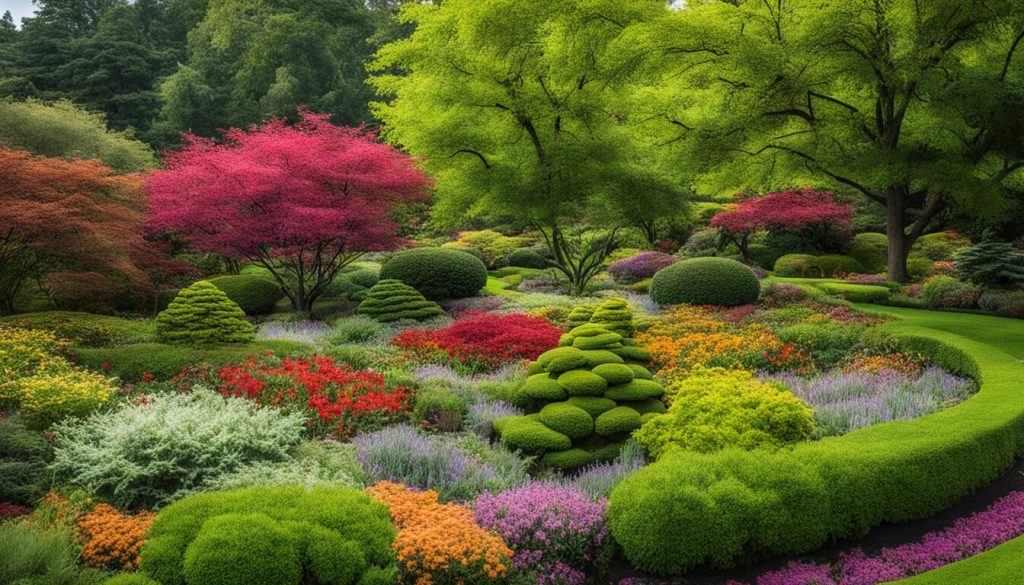
Another option is to choose plants that have attractive foliage year-round. Evergreen trees and shrubs are an excellent choice, as they provide year-round greenery and low-maintenance options. You can also pick perennials such as hostas, daylilies, and ferns for their attractive foliage, which can add texture and visual interest to your landscape design.
When choosing plants for your year-round landscaping, it’s essential to consider the soil, light conditions, and climate in your area. Make sure you select plants that are well-suited to your environment to ensure they thrive and look their best.
Designing with Seasonal Color
One of the best ways to ensure your landscape looks good all year long is by designing with seasonal colors. This involves using a combination of plants, flowers, and foliage that represent the colors of each season.
For example, in the spring, you can use bright and vibrant colors like pinks, yellows, and purples. In the summer, opt for warm and bold colors like reds, oranges, and yellows. In the fall, choose earthy tones like browns, oranges, and greens. And in the winter, use cool and calming colors like blues and whites.
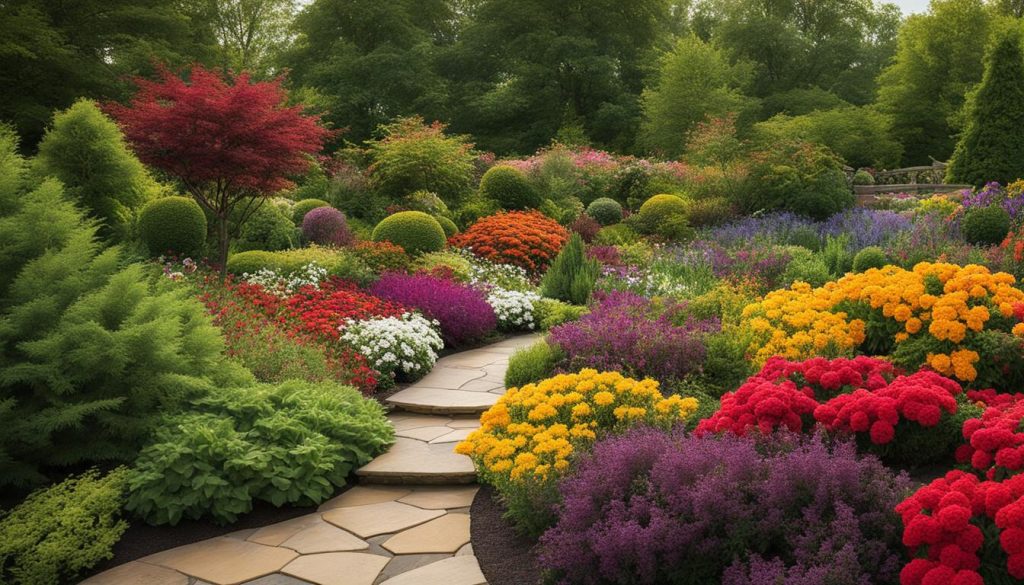
When choosing plants, make sure they complement each other and create a cohesive color scheme. You can also use hardscaping elements like stones, mulch, and decorative items to enhance your design and add additional pops of color.
Remember to also consider the textures and shapes of your plants and how they interact with each other. A mix of foliage, flowers, and even grasses can create a dynamic and visually interesting landscape.
When designing with seasonal color, don’t be afraid to experiment and try new things. With the right combination of plants and colors, you can create a beautiful and inviting outdoor space that looks great all year long.
Incorporating Evergreens and Perennials
Having a mix of plants that provides color and foliage for all seasons is key to achieving year-round beauty in your landscape. One way to achieve this is by incorporating evergreen trees and perennial plants into your design. Not only do they add visual interest and texture, but they can also cut down on maintenance efforts.
Evergreen Trees
Evergreens, as the name suggests, keep their foliage year-round, providing a constant source of greenery. They also come in different shapes and sizes, providing visual interest to your outdoor space. Pines, spruces, and cedars are examples of evergreens that grow well in Canada.
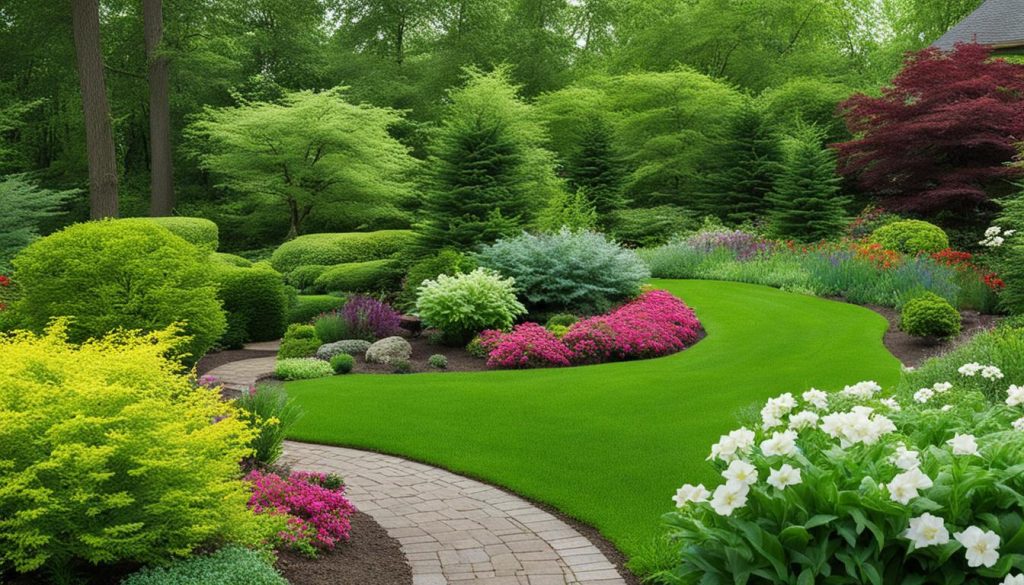
Perennial Plants
Perennials are plants that come back year after year, making them a great investment for your landscape. They also come in a variety of shapes, colors, and sizes, providing a range of options for your design. Popular perennial flowers in Canada include daisies, black-eyed Susans, and lavender.
It’s important to choose perennial plants that are hardy enough to withstand the Canadian climate. Some popular options include echinacea, daylilies, and hostas.
Combining Evergreens and Perennials
Combining evergreens and perennials is a great way to ensure year-round beauty in your landscape. The evergreens provide a backdrop of greenery while the perennials add pops of color and texture. You can also consider adding annuals for additional seasonal color.
When selecting evergreens and perennials, it’s important to choose plants that complement each other and fit well with your overall design. Consider factors such as height, texture, and color when making your selections.
Overall, incorporating evergreens and perennials into your landscape design can provide year-round foliage and low-maintenance options, ensuring your outdoor space looks its best throughout all seasons.
Creating a Four-Season Garden
Creating a four-season garden requires careful planning to ensure that your outdoor space remains vibrant and visually appealing all year long. It’s essential to select plants and features that thrive in each season, providing interest and beauty as the weather changes.
One key aspect of a four-season garden is selecting plants with different blooming periods, foliage colors, and textures. This ensures that there’s always something new to admire throughout the year. Some great options for a four-season garden include:
- Spring: Tulips, daffodils, crocuses, and flowering dogwood trees.
- Summer: Roses, hydrangeas, coneflowers, and black-eyed Susans.
- Fall: Mums, asters, ornamental grasses, and autumn-blooming crocuses.
- Winter: Holly bushes, winterberry, and evergreens with colorful foliage.
In addition to plants, consider incorporating hardscaping features that can add interest and functionality to your four-season garden. This can include elements such as:
- Water features: A small pond or fountain can add visual interest and help attract wildlife to your garden.
- Raised beds: These can help keep your garden organized and make it easier to maintain. Plus, they can help with drainage in areas with heavy rainfall or snow.
- Garden structures: Adding a gazebo or pergola can create a cozy outdoor living space that you can enjoy no matter the season.
With careful planning and the right combination of plants and features, you can create a four-season garden that is both beautiful and functional. Make sure to choose plants that are well-suited to your climate and soil conditions, and don’t be afraid to experiment with different colors and textures to create a garden that suits your personal style.
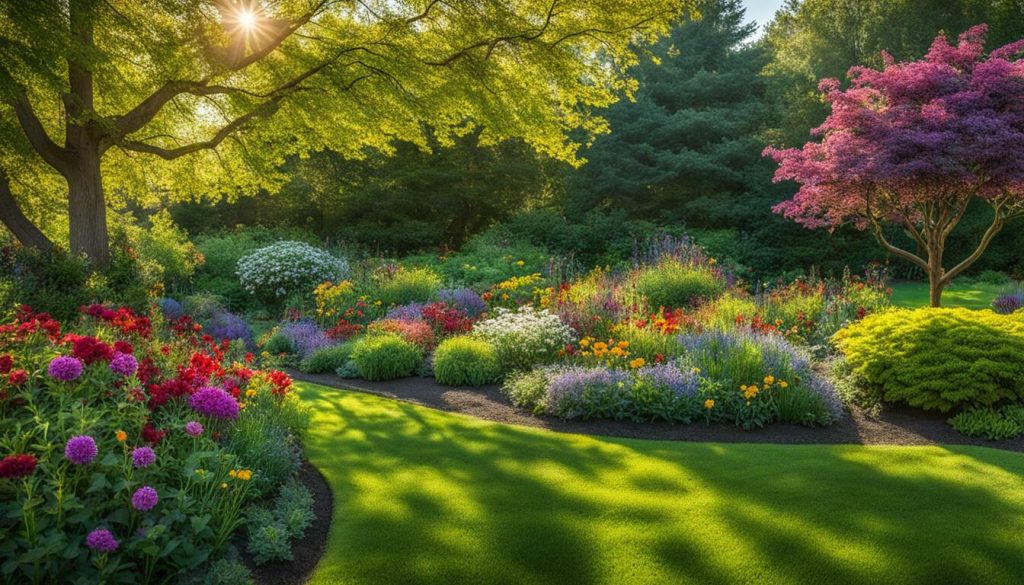
Winter Landscaping Tips
Winter in Canada can be harsh, but it doesn’t mean your landscape has to suffer. With a little preparation and care, your outdoor space can remain healthy, beautiful, and vibrant throughout the colder months. Here are some winter landscaping tips to help you get started:
Protect Your Plants
Winter winds and frost can damage delicate plants and shrubs. Consider wrapping them with burlap or other protective coverings to shield them from the elements. You can also add a layer of mulch to help insulate the soil and roots. This will promote healthy growth when spring arrives.
Remove Snow and Ice
Heavy snow and ice buildup can cause damage to trees and shrubs, so it’s important to remove them regularly. Use a broom or a soft-bristled brush to gently remove snow from branches and leaves. Be careful not to shake or hit them as this can damage their structure. If there is any ice buildup, use a de-icing agent, such as rock salt, to melt it away.
Prune Your Trees and Shrubs
Winter is the perfect time to prune your trees and shrubs. This will help keep them healthy and promote new growth when spring arrives. Be sure to remove any dead or diseased branches, as well as any branches that are crossing or rubbing against each other. This will help prevent damage and ensure proper growth.
Add Winter Interest
Just because it’s winter doesn’t mean your landscape has to be bland and boring. Add some winter interest with evergreen trees and shrubs, as well as plants that bloom in the winter months, such as winter jasmine or witch hazel. You can also add winter-themed decorations, such as ornamental lights and snow sculptures, to add some visual interest to your outdoor space.
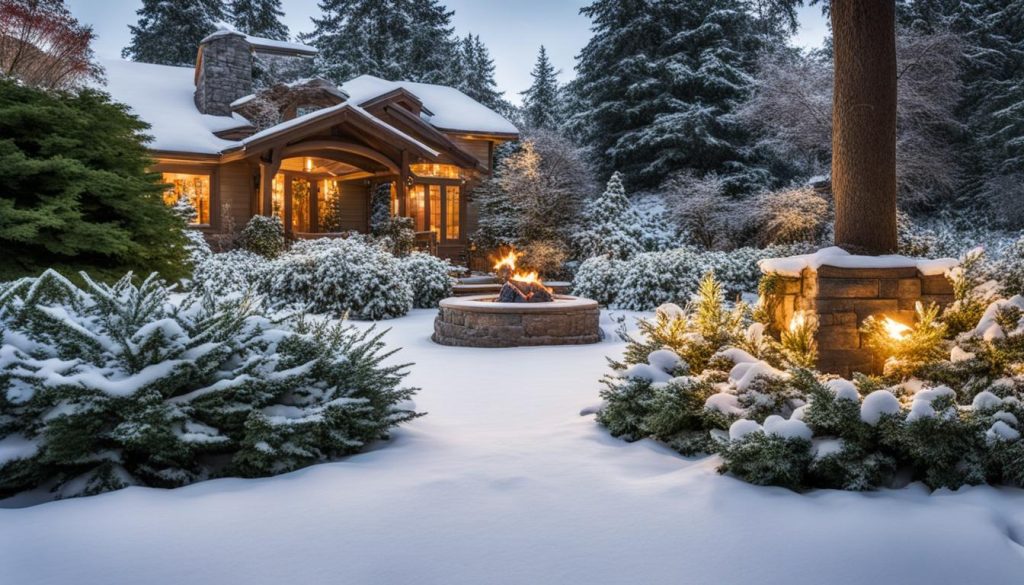
Keep Your Tools in Good Condition
Winter is the perfect time to make sure your landscaping tools are in good condition. Clean and sharpen your tools, such as pruning shears and shovels, to ensure they work effectively when you need them. Also, make sure to store them in a dry and secure location to prevent damage and rust.
By following these winter landscaping tips, you can ensure that your outdoor space remains healthy and beautiful all year round. Don’t let the cold weather get you down, embrace the winter season and make the most of your landscape!
Maintaining Year-Round Landscaping
Now that you have created a beautiful year-round landscape, it is essential to maintain it properly to keep it thriving and looking its best. Here are some tips to help you with maintaining year-round landscaping:
Watering
Regular and consistent watering is crucial, especially during the summer months. Water your plants deeply and less frequently to encourage root growth and prevent fungal diseases. During the winter, make sure to water your plants before soil freezes to ensure they stay hydrated during the dormant period.
Pruning and Trimming
Pruning and trimming are necessary to keep your plants healthy and looking good. It is best to prune deciduous trees and shrubs during the dormant season, while spring-flowering plants should be pruned immediately after blooming. Evergreens can be pruned lightly throughout the year to maintain their shape.
Fertilizing
Fertilizing your plants helps to replenish vital nutrients to keep them healthy and vibrant. Use a slow-release fertilizer in the spring and fall to provide your plants with a steady supply of nutrients.
Weeding
It is essential to keep weeds under control to maintain the health and appearance of your landscape. Regular weeding using a hoe or hand weeder can help to prevent weed growth before it becomes a problem.
Seasonal Maintenance
Throughout the year, it is necessary to perform specific seasonal maintenance tasks to keep your landscape looking its best. In the spring, clean up any debris, plant new annuals or perennials, and apply mulch. During the summer, stay on top of watering and pruning. In the fall, rake up leaves and cut back dead foliage. During the winter, protect your plants from harsh weather conditions by wrapping or covering them.
By following these maintenance practices, you can ensure that your year-round landscaping remains healthy, vibrant, and visually appealing in Canada. Keeping up with these important tasks will ensure that your outdoor space continues to be a welcoming and beautiful place for you to enjoy throughout the year.
Contact us today to learn more about our professional landscaping services.
FAQ
What are the benefits of year-round landscaping?
Year-round landscaping enhances the beauty and functionality of your outdoor space throughout the year, providing a welcoming environment no matter the season.
How do I choose plants for year-round beauty?
When choosing plants, consider their bloom times, foliage colors, and ability to withstand different weather conditions. Opt for a mix of evergreens, perennials, and seasonal flowers to ensure year-round visual appeal.
How can I incorporate seasonal colors into my landscape design?
You can incorporate seasonal colors into your landscape design by selecting plants that bloom or change foliage colors during specific seasons. Additionally, consider using decorative elements like colorful containers or outdoor art to add pops of color.
What are the benefits of incorporating evergreens and perennials?
Evergreens provide year-round foliage and act as a backdrop for seasonal flowers, while perennials come back year after year, reducing the need for replanting. Both options offer low-maintenance solutions for your landscape.
How do I create a four-season garden?
To create a four-season garden, choose plants that showcase different blooming times, foliage colors, and textures throughout the year. Incorporate hardscape elements like benches or pathways to create visual interest even during dormant seasons.
What are some winter landscaping tips?
During the winter, it’s important to protect vulnerable plants from frost and snow. Use mulch to insulate the soil and wrap delicate trees or shrubs in burlap. Keep pathways clear of ice and snow for safety.
How do I maintain year-round landscaping?
Regular maintenance practices include watering, fertilizing, pruning, and removing weeds. Additionally, monitor plant health and address any issues promptly to ensure your landscape stays healthy and vibrant throughout the seasons.

